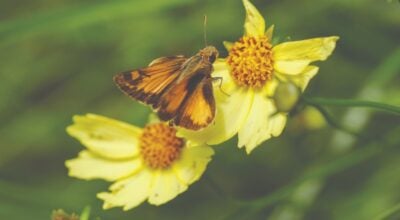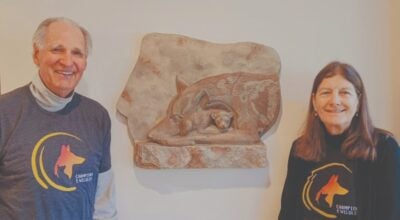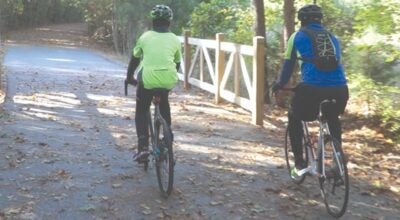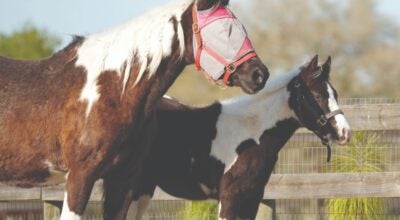Life in our Foothills April 2022 – Follow Your Nose
Published 12:12 pm Wednesday, April 27, 2022
|
Getting your Trinity Audio player ready...
|
Allison Andrews, Canine Scent Work Trainer At Foothills Canine Academy
Did you know dogs have up to 300 million olfactory receptors in their noses, compared to about six million in humans, and the part of a dog’s brain that is dedicated to analyzing smells is about 40 times greater than ours?
Now imagine a sport that allows a dog to do what they are naturally best at doing: Following their nose.
Canine scent work, also known as nose work, is a wonderful activity for owners and their dogs. Here the dog leads the handler, using their own natural scent abilities to locate “hides,” which are usually cotton swabs soaked in essential oil, placed inside a container placed in various locations within the search area. The essential oils used are novel smells to a dog, such as birch, anise and clove.
Unlike agility training, which can be physically demanding on both dog and owner alike, scent work is a quieter, more relaxed sport in which any dog and owner can participate. Another interesting fact is that you can also do scent work with cats, horses, pigs, rats and even chickens!
Often owners of dogs with behavior problems not solved by obedience training, treats or extra play time, find that scent work is exactly what the dog needs to overcome the behavior issues. Because it allows the dog to do what they are naturally best at and gives them a sense of pride, purpose and confidence, scent work might be the one thing that helps.
Allison Andrews, of Foothills Canine Academy, says “Many times, obedience training is not really a solution for a high energy dog. It doesn’t really work if you have a dog with all of this extra energy and you don’t know how to get rid of it. So, nose work is actually even more effective than physical exercise because they are using their brain to solve the problems, and their olfactory is 60-80% of their brain. It wears them out mentally. Then, they’re more satisfied and they can focus better and are calmer. Throwing a ball with a high energy dog usually just gets them more worked up, and it doesn’t really satisfy them, they just get more and more energy.”
The truth about scent work is that there is actually not much training for the dog to do the work, because they already know how to do scent location. Owners attend classes to teach themselves and the dogs how to navigate the scent search areas, and how to know when the dog is “signaling” that they’ve found a scent. Usually that signal is a head turn where they look up to the owner to say “I found it!” Just like a smoke plume from a campfire, the dogs follow the scent “plume” back to the source. Factors such as wind can move the plume and the dogs have to follow the plume to the source, and then let their owners know they located it.
The beginning of training for the human is learning how to read their dog. The owners learn to read their dog’s body language that indicates they are working a scent trail, and to recognize when they’ve gotten as close as possible. The training for the dog usually starts with items the dog would look for naturally, like food and toys. In fact, owners can reinforce scent training at home by using the dog’s toys. One of Allison’s clients even trained her dog to sniff out and find her lost keys! The second part of the human training is how to follow their dog, how to move or not move, how to handle the leash and how to stand, all in order to not disrupt the scent plume. Later on, she moves to showing owners how to put out the hides to challenge their dogs.
Allison started out in Greenville working with a dog behavior consultant, in 2011, after moving to the area from Savannah. She had just started out in dog training and needed a mentor. They worked with very fearful and anxious dogs, and got into nose work to help the dogs build confidence and to help their owners bond with them. “Most people, when they have a dog with problems, they’re very frustrated. Nose work allows the dog to show the human how incredible they are, that they have this skill that we don’t have and so it helps the human look at their dog differently. It gives the dog a purpose and an activity they can do that is very safe,” she says.
“Canine scent work is an activity that became a sport. Most people know what drug dogs do, and it’s the exact same thing except that our dogs are searching for essential oils. It’s the same training, and it actually started with a group of professional canine officers in California about 15 years ago who were working with shelter dogs who had a lot of energy and needed more exercise. So, they were like, why don’t we do detection work with them? It uses their mind and their physical energy,” says Allison. The California shelter volunteers soon learned how much fun scent work was and talked the officers into doing classes for their own dogs. Slowly, the sport has made its way to the East and the South.
Most people are told to “give their dogs a job,” but to Allison “Nose work is not just a job, it gives the dog a purpose. When the dogs realize what we are asking them to do, you can just see them light up. They go at it with a purpose and they feel really important, like they’re on a mission. They’re not just goofing off, they’re serious about it! It’s like the dog has found their life’s calling and they finally found their purpose.” When she started working with her own dogs and saw the positive impact it had, she became addicted to the sport.
Owner Karen Rayburn attends Allison’s classes with her dogs Darby and Tango and says “She has given my dogs so much confidence and helped me build a wonderful bond with them. It’s so fun seeing the dogs learn they get rewarded for using their instincts and communicating with us.” Indeed, how confident the dogs become when they get to do something they are naturally good at.
“It’s amazing to see the transformation in the dogs,” Allison says. “When they start, most of them are a little confused. Most of them their whole lives are told “don’t sniff, just walk!” So when we finally tell them to go sniff, they’re like “are you sure?” Then they finally get it, and you can see the light bulb moment. For most of them it’s after week one.” Owners can then transition the dogs to doing scent work during specified times and learning to take walks with minimal sniffing. They learn “sniffing time” versus “exercise time.”
Allison’s Campobello location is central to all of her clients, who come from as far south as Greenville County, Pickens and Spartanburg, all the way up to North Asheville. Her training center has indoor and outdoor spaces. Each class has six students and lasts about an hour and half. Once the AKC added scent work competition, Allison says most of her clients now come to train for competition but she does offer Foundations Scent work classes for beginners as well.
In scent work competitions, there are five elements: Interiors/buildings, exteriors, containers (such as luggage), vehicles and buried items. Out of the thousands of dogs Allison has met and worked with, only a couple were uninterested. It’s her goal that everyone does scent work with their dogs. Competitions are frequently held in the Charlotte, Atlanta, Brevard, Durham and Winston Salem areas, as well as Union SC and at the Spartanburg Fairgrounds. The club local to our area is called the Upstate South Carolina Scent Work Club.
Any dog – blind or deaf dogs, missing limbs, aged out of agility competition, old, young and any breed – can enjoy scent work. Haven Meeks, a 17 year old retired Elite 3 nose work champion, has lost her hearing, but many times remains the fastest and most accurate dog in the class.
If you are interested in trying out scent work with your dog, you can visit http://foothillscanineacademy.com, contact Allison Andrews at 864-376-8254, or email her at http://foothillscanineacademy.com/contact
Photographs by Erin Boggs, Allison Andrews and Pix2Go















